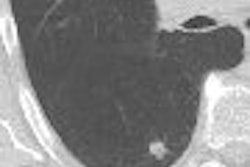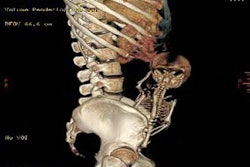The true value of CT screening for lung cancer awaits results of the massive National Lung Cancer Screening trial, a National Cancer Institute study that expects to enroll 50,000 patients in the U.S. by 2009. But data from other smaller trials are available now to help guide use of CT for lung cancer screening.
The findings from one of the largest trials to date -- involving 5,202 former or current smokers -- was reported by Dr. Giulia Veronesi at the 2006 American Society of Clinical Oncology (ASCO) meeting in Atlanta. Veronesi is from the department of thoracic surgery at the European Institute of Oncology in Milan, Italy.
For this trial, all subjects were asymptomatic and had a smoking history of 20 pack years or more. Two-thirds of the patients were men and 80% were current smokers. The median age was 57.
The patients were followed by annual low-dose, multidetector CT for five years following this diagnostic/therapeutic algorithm: patients with CT-detected nodules of 5 mm or smaller were referred for follow-up CT at 12 months.
Patients with nodules from 5.1 mm to 8 mm in diameter were referred for CT screening at three months. If there was no progression of the lesion, they were followed with CT at one year. Patients with nodules larger than 8 mm were referred for FDG-PET follow-up, and if that follow-up was negative, they were referred for CT at one year. Patients with a positive CT and a positive FDG-PET were referred for biopsy.
"The malignancy rate ranged from 0.62% among younger patients to 3.6% among the oldest patients," Veronesi said. The screening detected 53 malignancies and the overall recall rate was 10%. "Seventy-three percent of lesions were stage I and II, 22% were stage III and 5% were stage IV," she said.
In addition, "11% of patients underwent surgical procedures for nonmalignant lesions, which compares favorably with the 14% rate of invasive procedures for false-positive findings on traditional x-ray," she said.
Veronesi's group concluded that CT screening is effective in high-risk populations "if a strict workup protocol is followed."
By Peggy Peck
AuntMinnie.com staff writer
July 18, 2006
Related Reading
Mayo Lung Project: Lung cancer screening leads to overdiagnosis, June 9, 2006
U.K. group finds high miss rate for lung cancers on chest x-rays, June 9, 2006
CT screening identifies curable lung cancers, February 14, 2006
I-ELCAP data suggest need to work up secondary lung lesions, January 9, 2006
Copyright © 2006 AuntMinnie.com




















